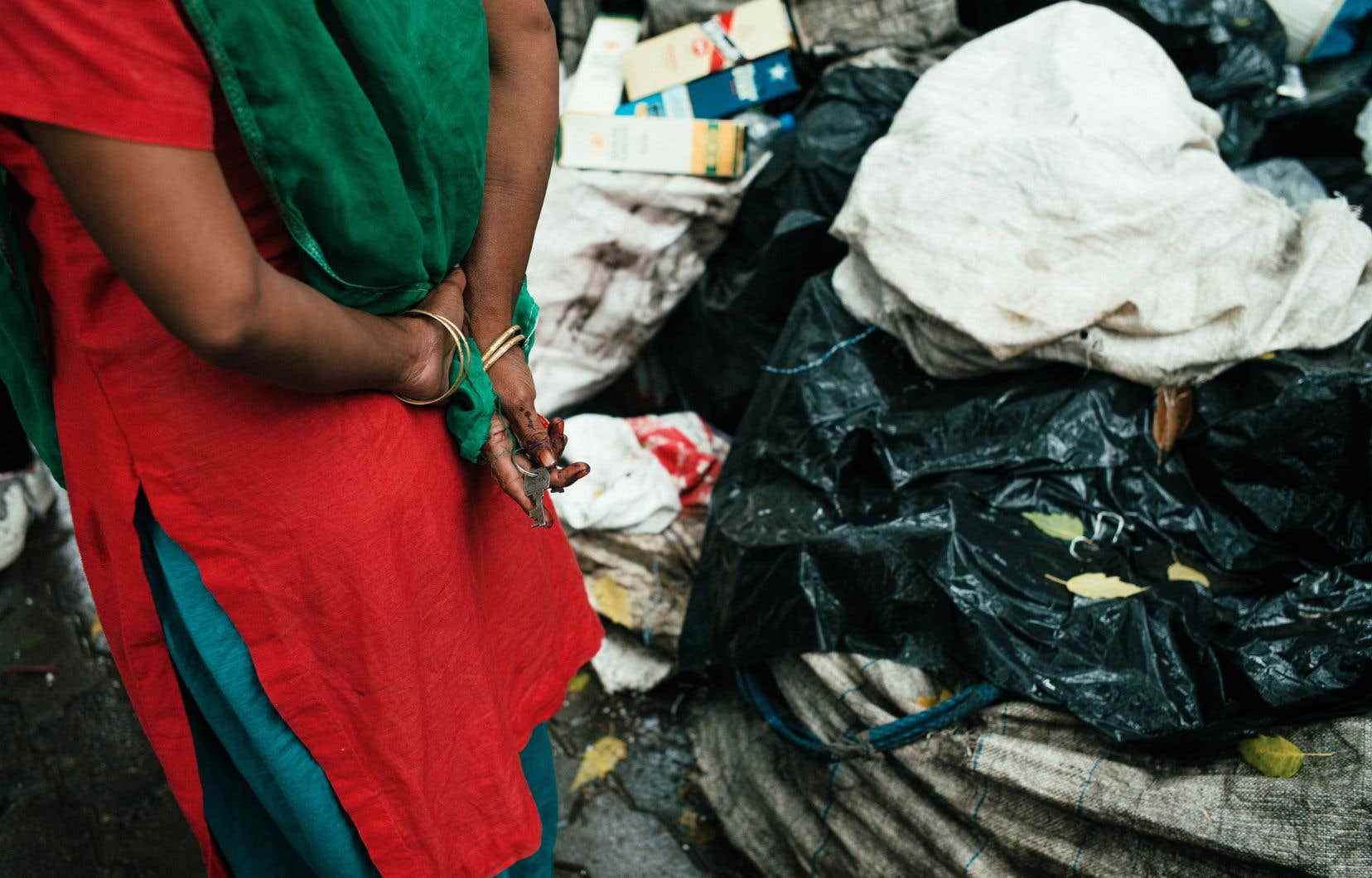Residents of New Delhi, the most polluted capital in the world, are suffocating. The duty presents the portraits of Indian women who fight for a future where the air will be breathable inside the houses, where the stoves are a major source of pollution. Last of two texts on the impact of pollution air among the poorest in India.
In the heart of the Indian capital’s city center is the upscale Chanakyapuri district, where mansions and embassies line the tree-lined streets. Except that only a few kilometers from the rich and modern buildings, a community of Indians lives in a small shantytown, where the dwellings are almost all made of cardboard, literally. The contrast is staggering.
This is where Manoura Begum, a 40-year-old woman, and her children live. One dupatta bright green covers his head and shoulders. She hosts The duty in the small square of land that serves as his land. Different construction materials are used in order to solidify his extremely fragile dwelling. Garbage bags are piling up outside the entrance. A few roosters roam freely.
From a young age, Manoura started working as a waste picker in the suburbs of the capital – a job she still does today. Every day, it goes door to door and collects waste from 300 households to sort it and resell the recoverable materials.
By dint of working outside all day long, the mother – recently become a grandmother – notices that her health has deteriorated over the years. And what makes his condition worse is having to cook on a chulha ‘, a small traditional indoor stove that usually uses wood or charcoal as fuel.
“I have to find a way out of here. […] The air makes me sick. I went to see a doctor, but the drugs are too expensive,” she told the To have to.
The World Health Organization (WHO) estimates that about a third of the world’s population cooks using open fires or inefficient stoves using petroleum, biomass (wood, animal waste, agricultural residues) or coal, which causes harmful pollution inside homes.
The use of chulha is widespread in homes in India, especially in rural areas and in poorer families. Women and children are usually the most affected, as they are the ones who spend the most time in close proximity.
Indoor air pollution caused an estimated 3.2 million deaths worldwide in 2020, including more than 237,000 deaths of children under 5, according to the WHO.
Manoura’s grandson comes out of the frail dwelling unexpectedly. He raises, fearlessly, a white rooster that is almost his own height. His grandmother looks at him with a sweet smile.
“I hope he and my children will have the opportunity to get out of here, not only to find a better job [que le mien], but also to save their health. »
The warrior mothers
In addition to being the head of Safai Sena, an organization that defends the rights of waste pickers, Manoura joined the group Warrior Moms, a collective of Indian mothers campaigning for a plan to reduce the air pollution. The band was formed on September 7, 2020, the International Clean Air Day.
Present at his side, co-founder Bhavreen Kandhari does not mince words. ” We, [les Indiens], we never ask the government for anything. We are not asking for good health infrastructures. We are not asking for clean air. We live like idiots who spend their lives without asking for accounts, ”she says confidently.
“But if we want to make things happen, we need a mass of people. We need people who are mobilizing,” she adds. She began campaigning for the cause in the early 2000s, after her twin daughters suffered respiratory problems.
This fall, the mothers of Warrior Moms, who reside in several states across the country, distributed and mailed nearly 5,000 postcards to government officials calling for clean cooking fuel available to everyone.
In 2016, the state had already provided a subsidy of 200 Indian rupees (3 Canadian dollars) to households to buy bottles of propane – an insufficient subsidy, according to the group, as the price of a bottle now reaches 1,000 rupees ($16). The subsidy is still in effect, but the group of mothers urges the government to improve it.
“In our post-COVID reality, everything has become so much more expensive. So even if cleaner options exist, who can afford them? That’s why many fall back on wood and charcoal, even though it’s extremely bad for them,” says Bhavreen.
“More than 40% of Indian households cook using dung, firewood, agricultural residues, kerosene or charcoal due to the high cost of non-polluting fuels for cooking,” perhaps we read on a card that Manoura gave to the To have to. These maps, written in English as well as in several regional languages, were also sent to officials of the Indian Ministry of Petroleum and Natural Gas.
Following the sending of the postcards and an official letter to the government authorities, around twenty members of the Indian Parliament gave their support to the request of the collective. It is now awaiting the 2023-2024 budget, which will be presented on 1er february.
The co-founder of the movement is clear: the group of mothers will continue its efforts and initiatives as long as the health of the children is at risk. “I think every parent should stand up, scream, and fight for the future of our children. When we know that our children will live 10 years less than those of another country, how can we not be angry? »
This report was financed thanks to the support of the Transat International Journalism Fund.The duty.
